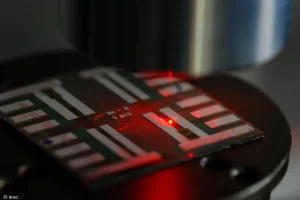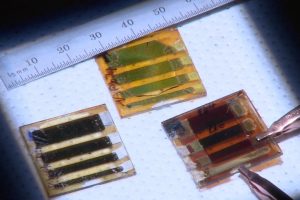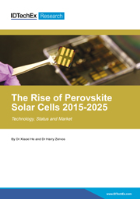Imec has come up with a perovskite LED stack emitting light a thousand times brighter than state-of-the-art OLEDs. This result is a pivotal milestone towards a perovskite injection laser, promising applications in image projection, environmental sensing, medical diagnostics, and beyond. The maximum brightness of OLEDs remains limited; just think of trying to read your smartphone screen on a very sunny ...
Tag Archives: Perovoskite
More on: Perovskite materials for solar, and more
Perovskite materials are emerging as a promising alternative in solar cells to silicon, thin-film cadmium telluride and thin-film cadmium sulphide (CdTe/CdS). Scientists from all over the world are looking to perovskites for power generation and other applications, and one of them is Professor Anvar Zakhidov: deputy director of the NanoTech Institute of the University of Texas at Dallas, head of ...
2D perovskite offered for solar cell research
US researchers are working on 2D perovskite crystals as a potential material for solar cells. Perovskite-structured materials are causing a stir in the world of solar power conversion, going from just-working to exceeding the efficiency of some conventional materials in only a few years. However, they have some serious drawbacks which are keeping them from practical application. “The challenge has ...
ITF2016: Imec and Solliance present first semi-transparent perovskite PV-module
Imec and its partner Solliance, presented today the first-ever semi-transparent perovskite PV-module, achieving power conversion efficiencies up to 12%. The technology enables for semi- transparent PV-windows which are a key towards Zero-Energy Buildings. Moreover, combining these semitransparent perovskite modules with Si solar cells, an unprecedented 20.2% in power conversion efficiency for a perovskite/Si stacked solar module was achieved. Stand-alone perovskite ...
Perovskite solar: Good, with a dark side
Perovoskite photovoltaics promise >20% efficiency, low cost materials and flexible, stretchable, transparent variants, but are destroyed by damp and emits poison as they die. So says a report by Cambridge market research firm IDTechEx. Organolead halide perovskites are the promising technology because they absorb light efficiently. “Flexible stretchable versions have been produced by Johannes Kepler University in Austria. With 100% ...
 Electronics Weekly Electronics Design & Components Tech News
Electronics Weekly Electronics Design & Components Tech News



